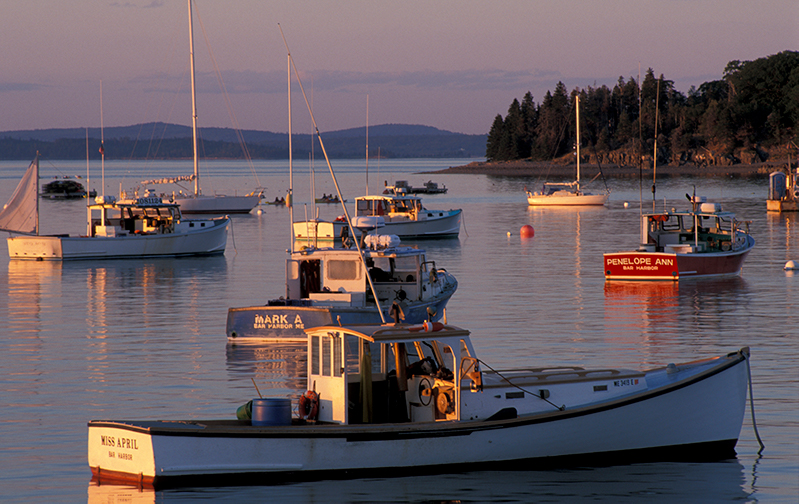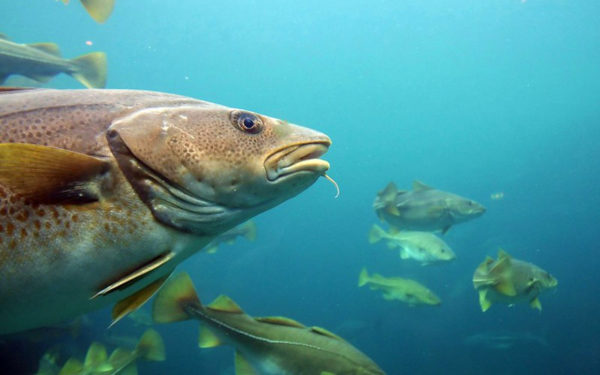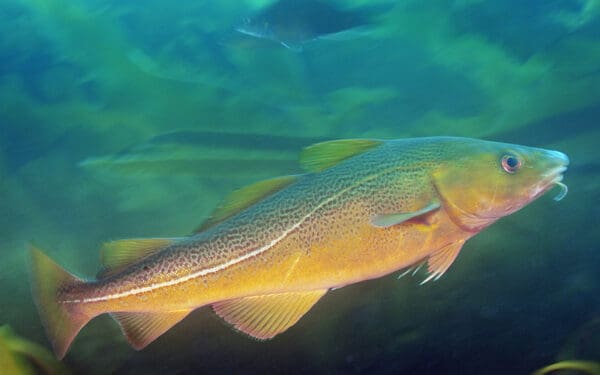
Without accurate information of what is happening out on the water, fishery scientists are not be able to accurately assess the status of different fish stocks with their models. Photo: EcoPhotography
New England is the birthplace of U.S. commercial fishing. For generations, fishermen here relied on plentiful stocks of Atlantic cod to fuel the nation’s bustling first industry. Legend has it that cod were once so abundant that you could walk on water across their backs.
Today, however, cod and other groundfish populations that have formed the backbone of New England’s fishing industry are at historic lows because of decades of overfishing.
NOAA Fisheries, the federal agency responsible for managing our fisheries and fishery resources through the New England Fishery Management Council, sets annual limits for how much of each commercial groundfish stock can be caught per year based on the scientists’ recommendations. Recent fishing harvests of cod and other groundfish have not gone above those limits on paper, but new assessments conclude that overfishing is still taking place. In order for this system to work, it’s necessary to know when the catch limit for a stock has been reached in reality, not just on paper.
That’s why NOAA Fisheries developed a new “at-sea” monitoring program in 2010 for groundfish sectors (self-formed groups of commercial fishermen that share allocated quota). The program allows fishery managers and scientists to know accurately what is being caught, what is being landed (brought to shore), and – most importantly – what is being discarded (fish caught but then thrown overboard and not brought to market) by the fishing boats in a sector.
But only a small percentage of sector trips are monitored, and everyone else is on an honor system. It isn’t working.
Current Monitoring Program is Not Working
For the 2018 fishing year, which started May 1, only 15 percent of all groundfish sector trips will have a monitor onboard, not enough to produce accurate fishery data. There’s also evidence that when a monitor is onboard, fishermen fish differently. They might fish in different areas, target different species, or discard fewer fish. It may be intentional in order to manipulate the data or it may just be human nature – we all act differently when watched. Either way, it’s a problem.
Now, it’s not necessarily illegal for fishermen to change their behavior. But it means that monitors, and therefore regional managers and scientists, are not getting an accurate picture of what’s being caught at sea. Discards are supposed to count against a sector’s quota. So, without a monitor, there is incentive for fishermen to discard certain fish (rather than land them) in order to avoid those fish being counted against the quota. When multiplied across the fishery, those extra, unaccounted for discards can add up.
When catch limits are low, as they are currently with Atlantic cod, fisherman have even more incentive to fish differently with a monitor onboard – they want to prevent early closures of that fishery because once they hit the limit, they can’t fish for cod until next year. Unfortunately, that further jeopardizes our already overfished stocks.
This behavior may keep stocks within the legal catch limit on paper, but it means there are fewer fish in the sea and a high chance that sectors are overfishing. Without accurate information on what is happening out on the water, fishery scientists are not be able to accurately assess stock status with their models: bad data in, bad data out.
Without good assessment, managers cannot accurately set appropriate catch limits that would help New England’s iconic cod and other groundfish stocks recover. With half of our groundfish stocks overfished, low monitoring coverage is simply irresponsible.
New Monitoring Amendment is an Opportunity for Improvement
The New England Fishery Management Council is currently developing an amendment to the groundfish management plan that could revamp the monitoring program. The stated purpose and need of the amendment is “to improve reliability and accountability of catch reporting and to ensure a precise and accurate representation of catch.”
It could be a game-changer.
Over the summer months, Council staff will conduct analysis to better understand the scope of the issue. And as the amendment progresses, Conservation Law Foundation will be there each step of the way. We will advocate for the use of sound science and the best management measures possible to prevent overfishing, rebuild our historic fish stocks, and ensure the long-term survival of our fisheries and fishing communities.
One new tool that is already working on the West Coast and is likely to prove instrumental in this process in New England is electronic monitoring – replacing human monitors with cameras. While it’s not a one-size-fits-all solution, electronic monitoring may become a more efficient and cost-effective way to collect accurate data on every boat.
At the end of the day, New England needs to achieve 100 percent catch accountability in the groundfish fishery. Increasing monitoring to a level that will solve the problems in our fishery is the most obvious and tenable way to do so. Incremental improvements are no longer enough.
It can be an uphill battle to prioritize the long-term benefits of a healthy fishery over short-term cost – but it’s one worth fighting.



